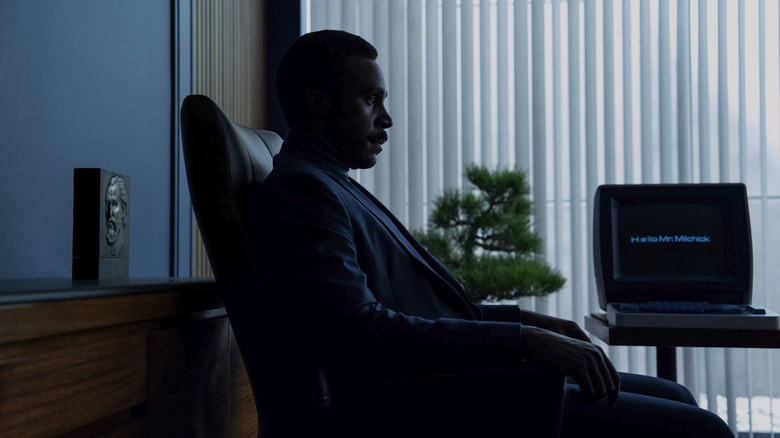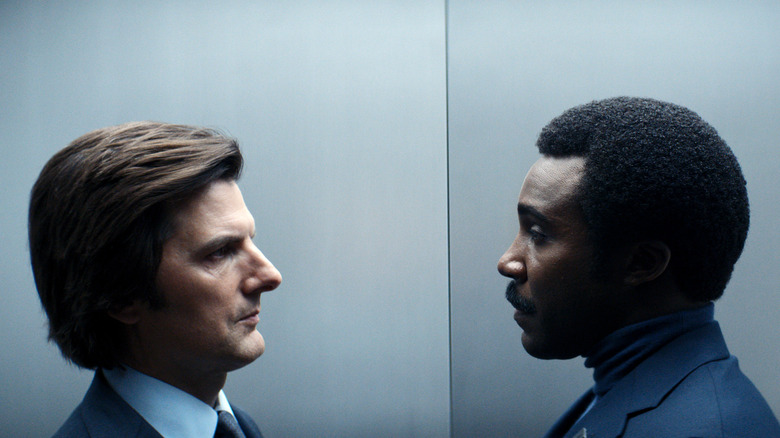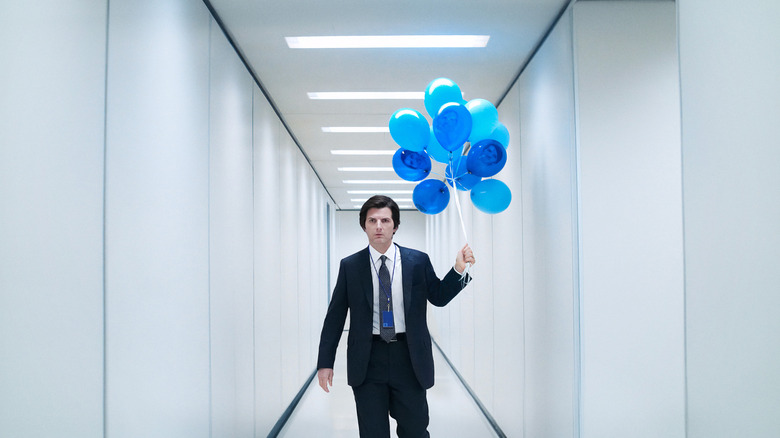Severance Season 2's Most Important Episode Features Some Unlikely Star Wars Magic
I have a confession: I think "Severance" has some problems. Before you get out your torches and pitchforks, let me make it clear that I do really like the show. It has a great aesthetic that only gets better in "Severance" season 2 thanks to some standout cinematography, plus the performances are excellent and the surreal, dark comedy-infused mystery box of it all is undeniably compelling. But at the same time, the show's first season felt a little too heightened in a way that bothered me.
If Lumon can't inflict physical harm on their severed employees because it would hurt the outies too, then what's stopping innies from physically resisting their psychological punishments? Would Lumon really risk physically injuring the outies by dragging the innies to be tortured in the break room? Why are severed employees even necessary when Lumon has so many unsevered employees who work on the floor? Who are any of the villains, other than caricatures of middle-manager stereotypes? These questions and others like them have always pulled me out of the show, and while I know that any or all of them could one day be answered as the mystery unravels, shows like "Severance" don't have the best track record of making good on their promises when they take so long building them up.
But then I watched "Severance" season 2, episode 5, "Trojan's Horse," and nearly all of my complaints were immediately addressed. I thank my lucky stars and Apple TV+ for hiring Beau Willimon, the mind behind the spectacular prison arc in the Star Wars spy series "Andor," to work as an executive producer on the show. And the same brand of grounded sci-fi that made those "Andor" episodes so great takes the center stage in the latest "Severance" episode — one that I would argue is the show's best yet.
Trojan's Horse brings a lot of pieces together in Severance season 2
"Trojan's Horse" features a series of scenes that help add texture and context to the main storylines of the show — specifically, the inner workings of Lumon and its treatment of non-severed employees. Mr. Milchick (Tramell Tillman) is the central character for much of this, as we see him dealing with conflicted feelings toward both his employers and employees.
Early on, he spars with Miss Huang (Sarah Bock), throwing a bit of his managerial weight around in what seems to be some sort of office rivalry. Later, he's severely scolded in his performance review, where we learn that many of the more questionable workplace activities seen so far this season were his initiatives and not those of the company at large. At the end of the episode, for the first time in the whole show, we see Milchick's unnervingly cheerful mask finally drop for a split second when he confronts Mark S. (Adam Scott) in the elevator. A single F-bomb is enough to shatter the illusion of Milchick's kindly demeanor, and for the first time in the show's history, I started to believe that there might be real, physical consequences for continued misbehavior on the severed floor.
At the same time, "Trojan's Horse" finally brings up a long-needed discussion about the ethics of employment at evil corporations. When Ricken (Michael Chernus) gets excited about the prospect of writing a company-approved self-help book for Lumon's innies, Devon (Jen Tullock) objects, saying that doing so would be feeding a corporate machine they know to be cruel. Ricken acknowledges that, but acknowledges the elephant in the room — the money is good. And what if he could actually do some good and change things from the inside?
Severance needed a little bit of Andor
Every science-fiction story lands on a gradient of material context. How feasible is the idea? How thoroughly does the story explore its ramifications and technicalities? Having a sci-fi tale that's less tethered to reality isn't a problem, but when you're engaging with as many material ideas as "Severance" does, the whole thing starts to feel hollow if you don't address certain things.
For the entire show up to this point, characters like Milchick and Harmony Cobel have been little more than well-drawn caricatures of real-world middle managers. The performances are strong, and they're certainly creepy, but what is their actual relationship to this strange place, other than Harmony's cultish upbringing? What's their relationship to the work outside of being vessels for Lumon writ large? Seeing Milchick brush up against his own shortcomings finally forces some answers to that question. He's not an animatronic puppet in a haunted house, but one of those self-deluded managers who truly believes he can make a terrible company a great place to work. That's the kind of detail that actually tethers a story's sci-fi concepts to something real. It makes the whole Lumon office feel less like a theme park maze and more like a true, living machine, full of wheels turning and pistons pumping off screen.
A ton of that is obviously due to episode writer Megan Ritchie, but it's also the same grounded approach that Willimon helped bring to "Andor," a show that's been widely praised for turning Star Wars into something much more mechanically complex." Where "A New Hope" shows a rebel army kitted out with ships and weapons, "Andor" asks where that money comes from, how it's laundered and distributed, what the politics within the rebellion look like, and how life and a galactic economy under imperial rule actually works. While mystery can carry "Severance" a long way, it needed this kind of episode to fill out the world of Lumon and show a bit of the clockwork behind the scenes.
New episodes of "Severance" season 2 arrive on Fridays.


